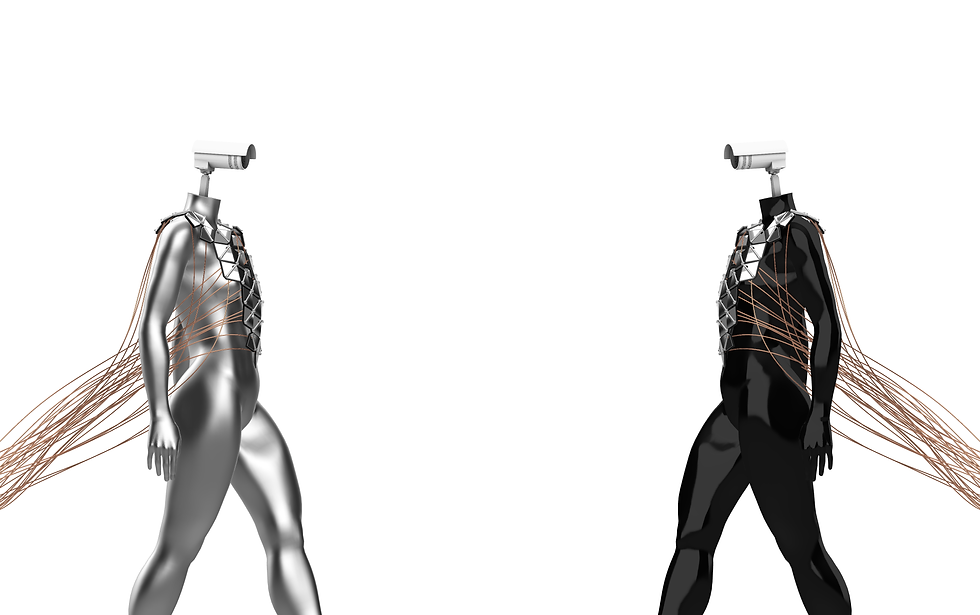
Gaze Through the Second Sex
Questioning The Power Dynamics
Of THE GAZE Between Different Genders
SUMMARY
OVERVIEW
TIMELINE
TEAM
Gaze Through the Second Sex is an interactive wearable device that instigates discussion about the power dynamics of gazing behavior. The device is assembled from reversible components, a 3D-printed frame, an Ultra-red camera, and Raspberry Pi. The camera actively detects the pupils of the gazers and the direction they are staring at the wearer’s body, the corresponding components will then be activated and flipped to a mirror, reflecting the gazer onto the wearer’s body.
Mar - May 2021
My Role: Interaction Designer, 3D Modeling, Prototyping
Collaborating Designers: Jiaxuan Ren, Yiying Wu, Yu Cheng
Instructors: Adam Hutz, Vivek Rao
Motivations: Gaze & Post-Feminism

This wearable design is inspired by the escalating conflicts among gender issues, feminism topics, sexual harassment, and non-verbal sexual violence that took place in quotidian life. Through this project, we would like to magnify a gender topic to question the status quo of the social relationship between males and females.
The existentialist philosopher Jean-Paul Sartre introduced the concept of le regard, the gaze, in Being and Nothingness (1943), wherein the act of gazing at another human being creates a subjective power difference because the person being gazed at is perceived as an object, not as a human being. In the fields of media studies and feminist film theory, the male gaze is conceptually related to the behavior of voyeurism, scopophilia (pleasure from looking), and narcissism (pleasure from contemplating one's self).


The cinematic concept of the male gaze is explained, and developed in the essay "Visual Pleasure and Narrative Cinema" (1975), in which Laura Mulvey proposes that sexual inequality — the asymmetry of social and political power between men and women; and that the male gaze is a social construct derived from the patriarchal ideologies. She put forward a more structuralist view based on the unchangeable division of labor under the patriarchal system: men are actors in the world, women are passive objects; men are speakers and interpreters of meaning, and women as objects of speech are meaningful undertakers.
We hope to blur the gender boundary, putting the in the position of being gazed, emphasizing the bilateral power dynamic of gazing and the self-reflection of the gazer. The gazer becomes a visual symbol, the passive object, and the bearer of meaning; and the one being stared becomes the subject, the speaker, and the interpreter of meaning. We recorded and presented the gaze of the body subject. Through the reflection of the mirror, we explored the relationship between the body and the outside world, self-satisfaction, and gaze behavior.

Image Sources:
Corey Brickley, Pater Sato, Emilio Villalba
Interaction Design
When human eyes are detected within the scope of the camera, their real-time coordinates and direction will be recorded. The components on body parts that are being gazed at will be flipped from resin side to mirror side, reflecting the gazer’s face onto the wearer’s body.

The garment and the camera scope are correspondingly divided into four parts. The position of the pupils determines the controlled parts, and the gazing direction controls the servos within each part.

Component Design

Form Control
The garment design considered the ergonomics and the scale of the components. The rhombus components are tesselated in the three-dimensional space, optimized by safety distance and wearing comfort.

Prototyping Process

